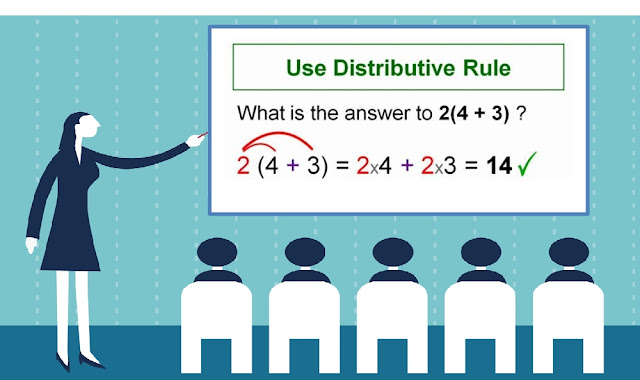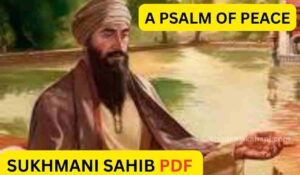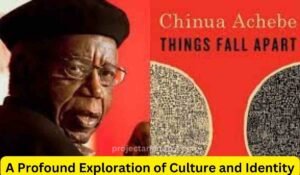Hundred and fifty years prior life was totally different for most of kids. Not every person went to class, and the people who were sufficiently fortunate to get instruction needed to learn things the most difficult way possible. We chose to discover what it might have been want to learn maths at school in the Victorian time frame. Along these lines, we went to visit a school where you can in any case see study halls that were planned and implicit the nineteenth century, and experience a typical day for a Victorian youngster.
The British School in Hitchin previously opened in 1810. It was opened by a nearby specialist who trusted that the most effective way to help the offspring of the poor was to give them instruction. At the time this was a significant questionable perspective – many individuals felt that to instruct needy individuals would give them thoughts over their station and would be a finished exercise in futility. We underestimate it now, however in those days schooling was a characteristic of status and personal development and something that individuals needed to battle for.
The principle homeroom that endures today in Hitchin was worked in 1837 – indeed, there was only one study hall for 300 young men (young ladies were instructed seperately in one more piece of the structure). It wasn’t even that large – about the size of a normal get together corridor these days, so conditions were somewhat confined. The image at the highest point of this page shows a comparable homeroom at a school in London. There was just a single instructor, so how could he figure out how to educate so many young men of various ages and capacities? The appropriate response is, he didn’t. Rather he would show every example to around 30 of the most splendid kids in the school. Every one of these students, known as “screens”, was then answerable for showing a gathering of 10 other young men. The gathering would remain in a semi-circle around the screen, confronting one of the instructing sheets that were stayed nearby the dividers of the room.
A great deal of the maths they learned was essential number-crunching and computations including cash, which in those days was all in pounds ( £), shillings (s), pence (d) and farthings (1/4). In contrast to the present basic arrangement of 100 pennies in a pound, adding or deducting amounts of cash included a smidgen more recollecting then, at that point. As a matter of first importance youngsters would need to remember the principles for the number of pennies were in a pushing, the number of shillings in a pound, etc. They did this by discussing them without holding back over and over once more. Here are the principles – read them so anyone might hear multiple times and check whether you can recall them without looking:
There are 4 farthings in a penny
There are 12 pennies in a pushing
There are 20 shillings in a pound
There are 21 shillings in a guinea
In the wake of investing a considerable amount of energy learning this, they would continue on to some expansion issues. The issue would be reviewed on the load up around the study hall, and in their gatherings the kids would recite it without holding back a few times. Here is an illustration of a common expansion aggregate:
Expansion aggregate
It unquestionably makes you ponder the course of expansion when you’re done managing tens, hundreds and units. Have a go prior to looking down to check your answer…….
The response to this one is £8.10s.3d and 3 farthings. Not so natural as it looks, right? Obviously Victorian youngsters weren’t relied upon to have the option to simply work out aggregates like this without heaps of training. The screens would tell them the best way to settle it, and afterward make them rehash a similar issue without holding back over and over again until they had totally retained it. Then, at that point, they would get back to their seats to record it. They didn’t utilize paper in those days since it was extravagant. Rather understudies composed on bits of record, or in sand plate utilizing sticks. Whenever they had replicated down the inquiry and worked out the right answer the screen would check it and really at that time would they continue on to the following inquiry. Sounds dreary? It surely was contrasted with the pleasant you can have with maths in school these days!
School wasn’t simply exhausting and redundant in the nineteenth century, it was severe also. Assuming that you didn’t keep the peace you were in hot water. You may need to sit in a corner wearing a sharp dolt’s cap assuming that you offered an off-base response, or sit with a wooden pole up your back assuming that you were slumping. More terrible still, assuming you got rowdy you could be bested with a stick or hit across the knuckles with a ruler. On the in addition to side, youngsters were compensated for difficult work and acceptable conduct with authentications and prizes, for example, toys that they couldn’t have managed the cost of themselves. Helpless kids lived in very unforgiving conditions, so another ball or a loop was a genuine delight worth buckling down for in class.
The young ladies learned maths too, however they additionally needed to master homegrown abilities. A portion of these wouldn’t have been considered as numerical in those days yet they really elaborate some very precarious aggregates. Young ladies were relied upon to figure out how to cook and to turn out precisely how much sugar, flour, eggs and so forth were required by ascertaining with loads and measures. They figured out how to make garments by drawing, cutting and sewing elaborate examples, and they needed to know how to run a family on an exceptionally strict spending plan. No one would have called it maths at that point, yet these were fundamental numerical abilities that were fundamental for endurance (are still very helpful for the two young ladies and young men today).
Maths in Victorian schools was intended to get ready individuals for genuine circumstances, ordinarily including cash. There were no adding machines back then, and despite the fact that kids figured out how to utilize a math device, most computations were done intellectually or on paper. Here are some certified instances of Victorian maths questions, why not have a go at them (answers are at the lower part of the page)? Remember the principles about pounds, shillings and pence.
1. A respectable man left his oldest little girl £1500 more than the most youthful, and her fortune was 11 thousand pounds, 11 hundred pounds and £11; what is the oldest sister’s fortune and what amount did the dad leave them altogether?
2. A man loaned his companion at various occasions these few aggregates: £63, £25.15s, £32.7s, £15.14s.10d, and four score and nineteen pounds, a large portion of a guinea, and a peddling. What amount did he loan taking all things together? (One ‘score’ = 20)
It’s a turbulent day on the ocean off the bank of Greece. The date is around 520 BC. Battling for his life, a man is hurled over the side of a boat and dropped out from the dark water to kick the bucket. He is Hippasus of Metapontum. His wrongdoing? Confessing to the world a numerical mystery. The mystery of the hazardous proportion.
The homicide of Hippasus involves legend, yet the mystery was genuine, and positively perilous enough to the convictions of the individuals who had some awareness of it.
It was a mystery claimed by the school of Pythagoras. These early Greek mathematicians (Pythagoras himself was brought into the world around 569 BC ) were fixated on the meaning of entire numbers and their proportions. The Pythagorean’s saying, cut over the entry of the school, was “Everything is number”.
The inward circle of the school, the mathematikoi, accepted that the universe was worked around the entire numbers. Each number from one to ten was given an exceptionally unique importance. Odd numbers were believed to be male and even numbers female. However there was one number that the Pythagoreans observed alarming, the number that may have cost Hippasus his life for uncovering its reality to the world.
The name Pythagoras these days is best associated with a mathematical hypothesis, the one that lets us know how to ascertain the lengths of the sides of a right calculated triangle, and it is from this hypothesis that the hazardous proportion arises.
Envision a basic square shape, each side 1 unit long. How long is the square’s inclining?
A square of side 1 unit and obscure slanting length
This apparently innocuous inquiry was the trigger for the Pythagoreans’ upsetting revelation. The length of the square’s slanting is not difficult to work out. It frames the long side of a triangle with a right point inverse, and two different sides of length 1 unit. On account of Pythagoras’ hypothesis we (and the Greeks) realize that we can work out the square of the length of the longest side of a right-calculated triangle by including the squares of the other different sides. So we realize the slanting’s length squared is (1×1)+(1×1)=2, making the length of the actual inclining √2. The number which when duplicated without anyone else makes 2. However, what is that number?
The square base of 2 isn’t 1 on the grounds that 1×1 is 1.
What’s more it isn’t 2, in light of the fact that 2×2 is 4.
It’s an in thing between.
This wasn’t an issue for the Pythagoreans. It was clearly a proportion of two entire numbers. They just needed to sort out what that proportion was. Basically that was the hypothesis.
Be that as it may, later an ever increasing number of hysterical endeavors, a terrible revelation was made. There is NO proportion that will create √2 – it just isn’t possible. It’s what we currently call an unreasonable number, not on the grounds that it is strange, but since it can’t be addressed as a proportion of entire numbers.
This was what sent the Pythagoreans into such a twist that they might have forfeited poor Hippasus. Assuming you accept that everything is built from entire numbers, it is a horrible a shock to find that there is an ordinary number, a ‘genuine world’ number like the inclining of a square, that doesn’t accommodate your image of the world. It’s a bad dream – and one from which the Pythagoreans could never truly recuperate.
How can it be the case to demonstrate that there is no proportion making √2?
The rationale is a little fiddly, however not very weighty.
We should envision that it is feasible to concoct such a proportion to deliver √2.
How about we call it topbottom.
Create this the least difficult proportion you can have – counterbalancing any normal variables.
Presently, we should duplicate the two sides of the situation without anyone else, so
top2bottom2=2
Next duplicate the two sides by bottom2, winding up with
top2=2×bottom2
This implies that top2 should be a much number – in light of the fact that twice anything is even.
Also that makes top a much number as well – in light of the fact that an odd number duplicated without help from anyone else is consistently odd.
In addition, on the off chance that top2 is a much number, so is bottom2.
This is on the grounds that a significantly number squared isolated by 2 is still even – and bottom2 is top2 separated by 2.
That makes base a significantly number. Along these lines, top and base are both even.
That implies that every one of them can be isolated by 2.
In any case, hold tight. We began by saying top and base were picked as the least difficult proportion – any normal elements had effectively been isolated out.
Presently we are saying they must have a typical component of 2. This is unimaginable. The main thing we can have wrong is our unique supposition, which was that √2 is a reasonable number. You basically can’t have a proportion that makes up √2. As Hippasus found to his expense, that engraving over the Pythagorean school All is number would need to be stretched out to adapt to more intricate thoughts than proportions of entire numbers.
[Editorial manager’s note: If you have partaken in this article you may get a kick out of the chance to attempt this intelligence . It depends on a somewhat unique evidence that the square foundation of 2 is unreasonable. This elective confirmation can be summed up to demonstrate that all square underlying foundations of entire numbers that are not square numbers are nonsensical, that is the square underlying foundations of 3, 5, 6, 7, 8, 10, 11 …etc.]
The divine circle is a nonexistent circle concentric and coaxial with the Earth on which the proper stars and planetary developments can be projected was first proposed by the Greek Mathematician Eudoxus (408-355 BCE). The Earth pivots on its hub and the divine equator is in a similar plane as the world’s equator.
Heavenly sphereEcliptic
This site shows a progression of charts with clarifications of the vital properties of the heavenly circle and the ecliptic: http://hyperphysics.phy-astr.gsu.edu/hbase/Eclip.html
The Ecliptic
The ecliptic is the clear way of the Sun in the sky over time on the heavenly circle. The point between the plane of the equator and the plane of the ecliptic is around 23∘ 26′ and is known as the obliquity of the ecliptic. Babylonian space experts perceived the pivot of heavenly bodies of stars along the zodiac circle (the ecliptic)
The convergences of the divine equator and the ecliptic are the equinox focuses where the lengths of the day in and day out are equivalent.
The Sun, and the circles of Earth and the planets, are holding nothing back or near the plane of the ecliptic.
Found in a specific order from the Earth: Moon, Mercury, Venus Sun, Mars, Jupiter, Saturn.
Every one of the planets spin around the Earth from West to East on their singular circles.
For more data and charts see: http://stars.astro.illinois.edu/celsph.html
Here is a connection to an assortment of movies to show the place of the sun and the ecliptic. http://www.sonic.net/~rknop/php/space science/astromovies/
The connect to this film shows the development of the Sun around the ecliptic
http://www.sonic.net/~rknop/php/space science/astromovies/ecliptic.php
Heliacal Rising (from ‘Helios’ the Greek for Sun)
The heliacal ascending of a star happens when it initially becomes noticeable over the eastern skyline at sunrise before it is concealed by the brilliance of the rising sun.
Each resulting day, the star will rise somewhat prior and stay in the sky longer before it is concealed by the splendor of the sun. At last the star can presently don’t be found in the sky at day break since it has effectively set underneath the western skyline. A star will return in the eastern sky at sunrise roughly one year later its past heliacal rising.
See: http://sun oriented center.stanford.edu/AO/sunrise rising.html
Antiquated space experts understood that later with regards to a year, a similar star returned, and a specific ‘evening star’ and comparing ‘morning star’ were really the equivalent in light of the fact that the star involved a similar relative situation in the sky. While noticing the heliacal ascending of stars, it became obvious that the development of the sun lingers behind the development of the stars. The way of the sun in this toward the east float is along the ecliptic.
Circumpolar Stars
While noticing the night sky, it immediately became evident to antiquated individuals that a gathering of stars seem to turn around a specific star in the sky, called the Pole Star. In the Northern side of the equator today, this star is situated by utilizing the ‘pointers’ of the heavenly body the Great Bear (Ursa Major) seen on the left of the image beneath.
North circumpolar stars
Stars on the Ecliptic
The ring of stars that lie in an area between around 9∘ above and beneath the plane of the ecliptic is known as the zodiac. The zodiac was partitioned into 12 segments of 30∘ each by Babylonian stargazers who perceived particular examples of stars (heavenly bodies) in each segment.
Precession
The Earth’s hub of revolution is gradually, yet ceaselessly, evolving. As the projection of the hub moves around the divine circle, the job of the North Star changes starting with one star then onto the next. This development of the hub, called precession, is extremely sluggish and requires around 26,000 years to finish a cycle. This peculiarity is said to have been found by the Greek cosmologist, Hipaprchus (190-120 BCE).
Precession
The star Thuban in the heavenly body Draco was nearest toward the North Pole in 2787 BCE and in 1793 BCE, it was supplanted by Kappa in Draco. Thuban was viewed as the post star until around 1900 BCE, when the a lot more splendid star Kochab in the heavenly body Ursa Minor started to move toward the shaft. Today, an alternate star called Polaris in a similar heavenly body is the North Star. It is the most splendid star around there of the sky. Thuban will bit by bit move back toward the north heavenly pole and will again be the pole star in 20346 CE.







